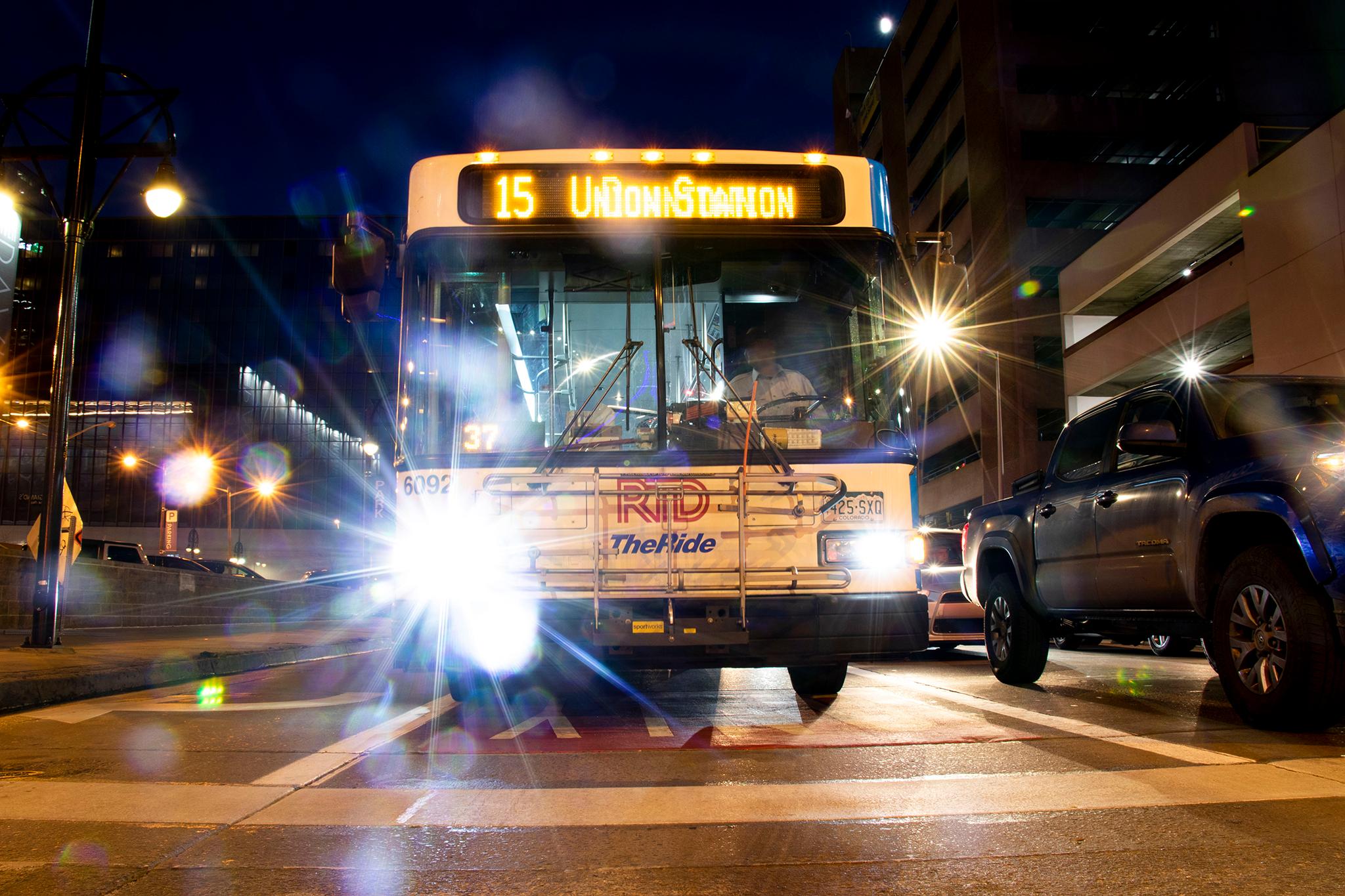
On most Tuesday afternoons, the Regional Transportation District’s board gathers for a free buffet in an out-of-the-way lobby before heading into their official meetings. Those meals are intended to fuel them up for discussions that often last for four hours or more.
Soon, though, board members will have to pay for those meals: $10 charged to their personal expense account. It’s one way RTD is cutting costs as it tries to close a $40 million gap in its 2020 budget. The board is set to give its final sign-off to cuts in December.
“It seems like, pardon the expression, low-hanging fruit,” board chair Doug Tisdale said of the cost-savings plan at a committee meeting in October.
The board is cutting $200,000 out of its own budget, limiting things like travel to professional conferences. Some capital projects will be put on hold, though it’s not yet clear which ones will be affected. RTD has $44 million in such projects planned for next year, including a new restroom for bus drivers in Aurora and new roof for its bus maintenance and storage facility north of downtown Denver.
Merit-based pay raises for salaried employees will be cut in half, and their retirement plan could take a hit too. Most departments are reducing costs by 10 percent.
“Everybody is feeling the pain,” board member Angie Rivera-Malpiede said.
The two exceptions are the rail and bus divisions. RTD doesn’t plan to cut service to help meet the new budget, spokeswoman Pauletta Tonilas said.
The fiscal crunch comes as RTD is trying to weather another, more public crisis. The agency has a crippling bus and light rail driver shortage, leading staff to propose temporary service cuts to give its overworked drivers a rest — and, staff hopes, break a cycle where many new drivers quit shortly after they start.
The temporary service cut proposal isn’t related to the current budget cuts, board chair Tisdale said.
“This is not an exercise in saying, ‘Oh, well, here's how we're going to save money, we'll reduce service,’" Tisdale said at a committee meeting in October. “That's not the issue. There's an ancillary relationship, yes. But the purpose behind looking at service reductions is the fact that we have a workforce problem.”
Slowing revenue created the funding gap. This fall, the agency learned that earlier projections had overestimated RTD’s 2020 revenue. Fare income is expected to be $14.8 million lower than projected and sales taxes could be off $25.2 million. RTD’s total base system revenue, including sales tax, fares, grants and other sources, is expected to be about $667 million next year.
Lagging ridership is behind the drop in fare revenue, said Heather McKillop, RTD’s chief financial officer. And forecasting sales tax income is difficult, she told a board committee meeting in October.
“One of the problems we have is our largest funding source is the most volatile funding source that is available out there,” McKillop said.
RTD’s sales tax forecasts come from the University of Colorado Leeds School of Business. The latest update, which was presented to the board in October, predicts revenue growth will slow from the roughly 5.3 percent the agency has experienced since the Great Recession ended to only about 3.2 percent annually for the next three decades.
“There's considerable slowing of the economies and the consequent slowing in the projected revenue growth for RTD,” Robert McNown, a professor of economics at CU Boulder, told RTD’s board in October.
Revenues could bounce back in the long run, according to CU Leeds. But in the meantime, cuts are in RTD’s immediate future.
Some board members implored McKillop to consider using a more stable or conservative revenue forecast, so relatively small changes don’t require last-minute cuts.
“It's kind of crazy to me that we have to scramble,” board director Judy Lubow said last month. “I am not a fiscal expert. But there needs to be some kind of cushion.”
The agency wants to move more money into reserves, but it has to balance that with the board’s desire to spend more on services and projects, McKillop said. The two-year “Reimagine RTD” process could help set priorities for the agency and end up reducing costs, she said.
“We are providing more services now and spending more money than we have,” McKillop said. “We're trying to see, what is the service that we can provide? And then, what is the service we want? Where do we want to be in the future? And what do we have to do to get there?"
RTD’s medium- and long-term financial plans predict more turmoil if the agency stays on its current trajectory, McKillop added. At a September board meeting, she said she expects a $12 million annual shortfall every year from 2026 to 2040. That troubled board members like Lubow.
“I want the board to be discussing what I consider, to me, a major problem,” Lubow said. “I think our services go beyond what we can afford easily. Which is sad to me because we all want to give greater services.”
One contributing factor is RTD’s commitment to finish rail lines promised to voters in 2004, including a $1.5 billion rail line to Boulder and Longmont. RTD is taking $12 million to $20 million a year and putting it away for those projects.
“That just happens to be almost exactly what we're off,” McKillop said in September.
Those rail lines are part of the FasTracks project, which is funded by a .04 sales tax and is budgeted separately from RTD’s base system. McKillop said that budget is balanced for 2020, but she expects it to get lean in a few years.
The Reimagine RTD process will get into full swing next year. In the meantime, the RTD board will gather for a study session on the budget next week.









